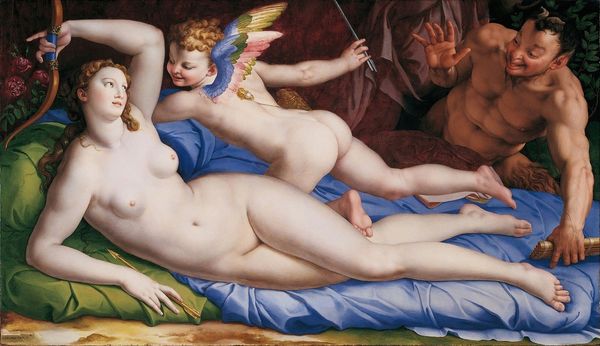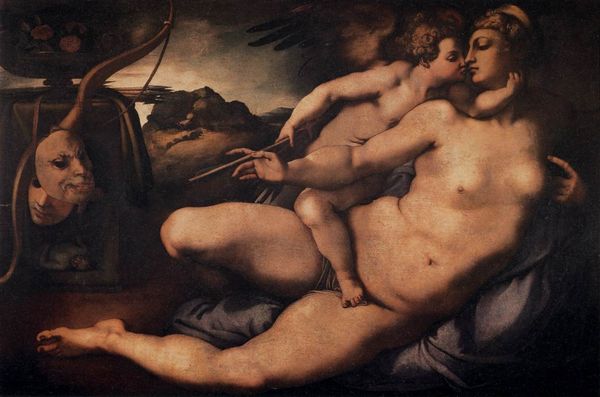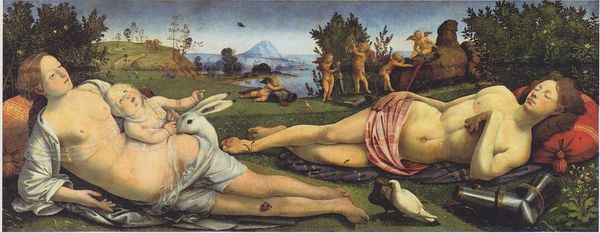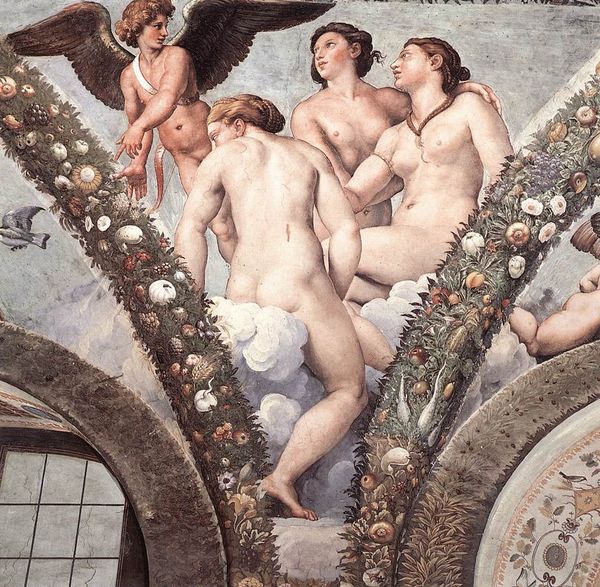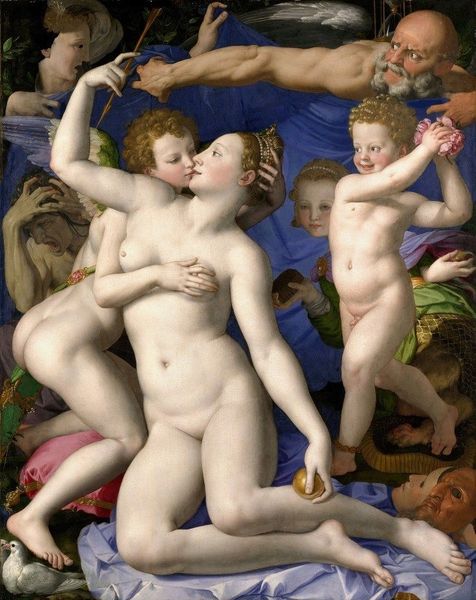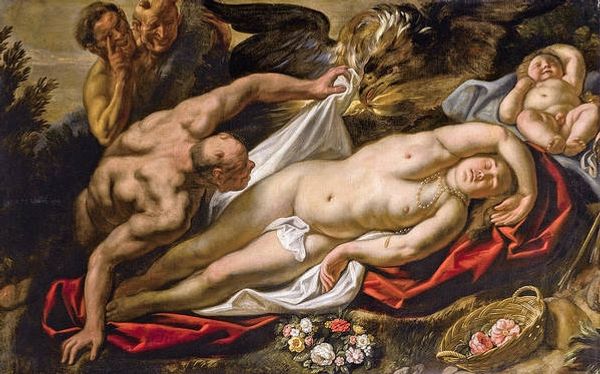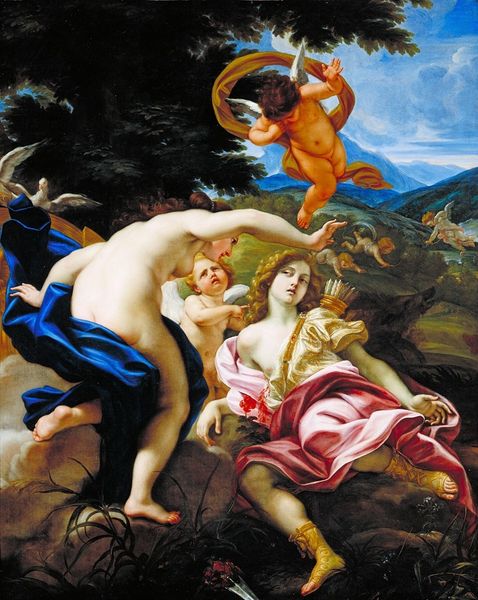
#
character portrait
#
fantasy art
#
sculpture
#
sculptural image
#
possibly oil pastel
#
roman-mythology
#
neo expressionist
#
surrealism
#
mythology
#
abstract character
#
surrealist
#
portrait art
Dimensions: 173.4 x 69.2 cm
Copyright: Public domain
Editor: Botticelli’s “Venus and Mars,” created around 1483, presents such a curious scene. Venus is poised and alert, while Mars is completely laid out and... well, asleep. What stands out to me is the materiality: the contrasting textures of the skin, fabric, and metal. What captures your attention most about this piece? Curator: The key here is to consider what went into making this and why. Botticelli was working for the Vespucci family—note the wasps or *vespe* buzzing around, a family symbol. He’s using tempera on panel. Why that material choice? What does it tell us about the expectations for art and its display in a Florentine household? Editor: So the material itself signals something about the patron's status and intended use. It's not just about the mythological story being told. Curator: Precisely. Consider the pigments themselves. Where did Botticelli source the blues, the reds? What did those supply chains look like? These materials had a very real cost in terms of labor and trade networks. Think of the lapis lazuli used for the blue, for example. Editor: That’s fascinating! I'd always focused on the Renaissance symbolism and the figures. It makes so much sense that it’s also a display of wealth and connections through the materiality. Curator: It's a useful reminder that "high art" exists within networks of production and consumption, often obscuring the material conditions that make it possible. It asks us to consider where the value truly resides, and for whom. Editor: It completely changes how I view the work. I’m now thinking about the physical act of painting itself, not just the symbolic narrative. I hadn't considered it as connected to these huge trades before. Curator: Exactly! What else can material history tell us?
Comments
No comments
Be the first to comment and join the conversation on the ultimate creative platform.

